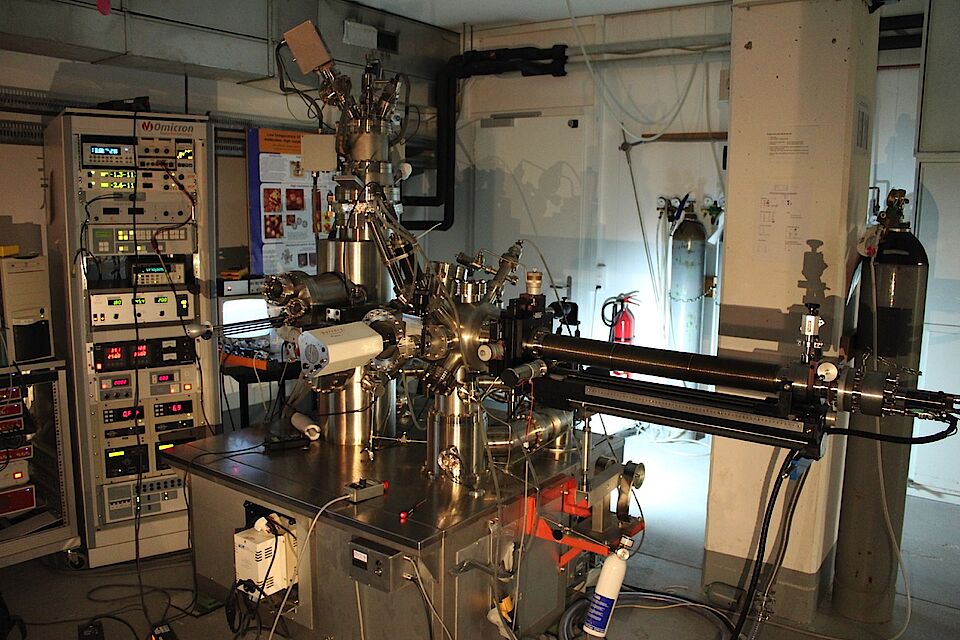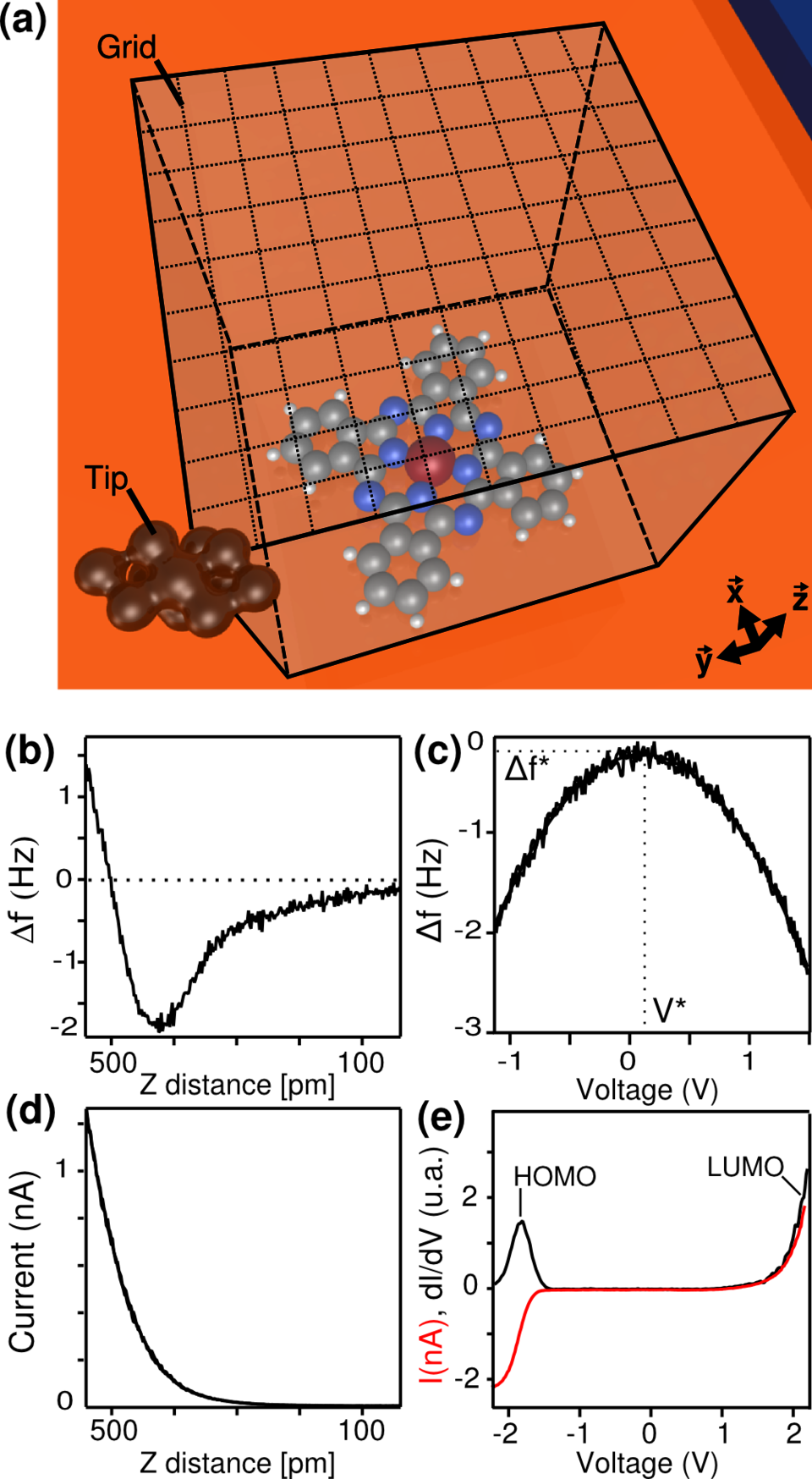Low Temperature Tuning Fork STM/AFM

Low Temperature STM/AFM
Our microscope is a low-temperature STM/AFM microscope (Omicron Nanotechnology GmbH) based on a tuning fork sensor in the qPlus configuration (stiffness of k = 1800 N/m, resonance frequency f0 = 26 kHz, Q factor up to 35000) The measurements are carried out at 5 K in ultrahigh vacuum (UHV) and operated with a Nanonis Specs OC4 system. Atomic force microscopy (AFM) is performed in the non-contact mode using a phase lock loop (PLL). STM characterizations are typically done in the constant-current mode with the bias voltage applied to the tungsten tip. The system supports a load-lock chamber for fast sample introduction and a second chamber for sample preparations. In the preparation chamber, atomically-cleaned metals (Cu(111), Au(111), Au(110)) and large band-gap semiconductors (TiO2, SrTio3) as well as superconductors (NbSe2, Pb(110), Pb(111)) can be prepared by few cycles of sputtering/annealing or cleavage in UHV. Molecule depositions are done from a quartz crucible installed in the preparation chamber on substrates kept at temperatures from 100 K to 1000 K. Additionally, we have the capability to sublimate single-molecule on the surfaces contained in the microscope (5K deposition).
Force and current spectroscopy at the atomic-scale

Our microscope is a low-temperature STM/AFM microscope (Omicron Nanotechnology GmbH) based on a tuning fork sensor in the qPlus configuration (stiffness of k = 1800 N/m, resonance frequency f0 = 26 kHz, Q factor up to 35000) The measurements are carried out at 5 K in ultrahigh vacuum (UHV) and operated with a Nanonis Specs OC4 system. Atomic force microscopy (AFM) is performed in the non-contact mode using a phase lock loop (PLL). STM characterizations are typically done in the constant-current mode with the bias voltage applied to the tungsten tip. The system supports a load-lock chamber for fast sample introduction and a second chamber for sample preparations. In the preparation chamber, atomically-cleaned metals (Cu(111), Au(111), Au(110)) and large band-gap semiconductors (TiO2, SrTio3) as well as superconductors (NbSe2, Pb(110), Pb(111)) can be prepared by few cycles of sputtering/annealing or cleavage in UHV. Molecule depositions are done from a quartz crucible installed in the preparation chamber on substrates kept at temperatures from 100 K to 1000 K. Additionally, we have the capability to sublimate single-molecule on the surfaces contained in the microscope (5K deposition).
